Chapter 8 Measures of Dispersion Ex 8.3
Chapter 8 Measures of Dispersion Ex 8.3
Question 1.
The means of two samples of sizes 60 and 120 respectively are 35.4 and 30.9 and the standard deviations are 4 and 5. Obtain the standard deviation of the sample of size 180 obtained by combining the two samples.
Solution:


Question 2.
For certain data, the following information is available.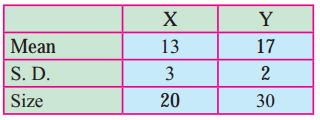
Obtain the combined standard deviation.
Solution:
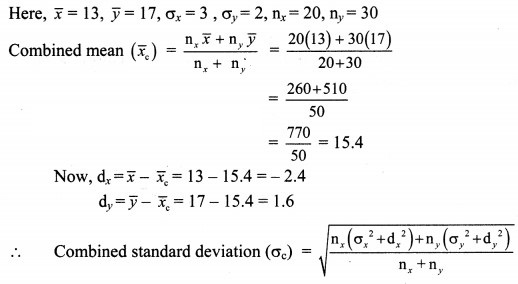

Question 3.
Calculate the coefficient of variation of marks secured by a student in the exam, where the marks are:
85, 91, 96, 88, 98, 82
Solution:
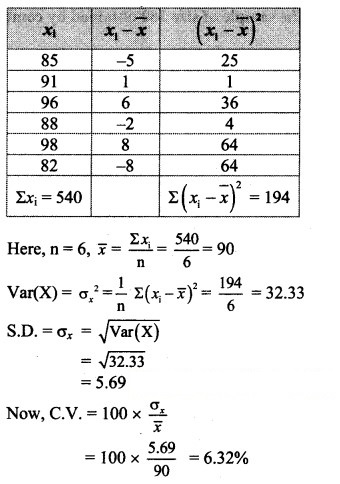
Question 4.
Find the coefficient of variation of a sample that has a mean equal to 25 and a standard deviation of 5.
Solution:
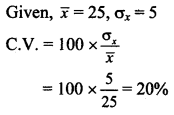
Question 5.
A group of 65 students of class XI has their average height as 150.4 cm with a coefficient of variance of 2.5%. What is the standard deviation of their heights?
Solution:
![]()
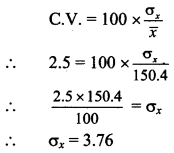
∴ The standard deviation of students’ height is 3.76 cm.
Question 6.
Two workers on the same job show the following results:
(i) Regarding the time required to complete the job, which worker is more consistent?
(ii) Which worker seems to be faster in completing the job?
Solution:

(i) Since C.V. (P) < C.V.(Q), Worker P is more consistent regarding the time
![]()
i.e., the expected time for completing the job is less for worker Q.
∴ Worker Q seems to be faster in completing the job.
Question 7.
A company has two departments with 42 and 60 employees respectively. Their average weekly wages are ₹ 750 and ₹ 400. The standard deviations are 8 and 10 respectively.
(i) Which department has a larger bill?
(ii) Which department has larger variability in wages?
Solution:

![]()
i.e., average weekly wages are more for the first department.
∴ The first department has a larger bill.
(ii) Since C.V. (1) < C.V. (2),
second department is less consistent.
∴ The second department has larger variability in wages.
Question 8.
The following table gives the weights of the students of two classes. Calculate the coefficient of variation of the two distributions. Which series is more variable?
Solution:
Let x denote the data of class A and y denote the data of class B.
Calculation of S.D. for class A:
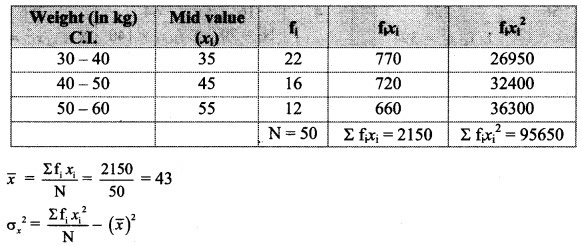
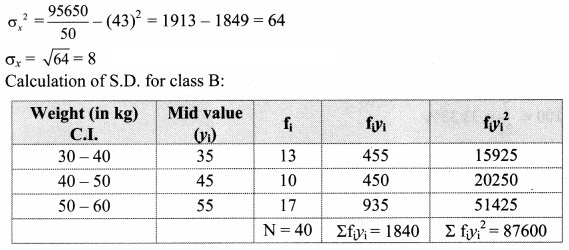
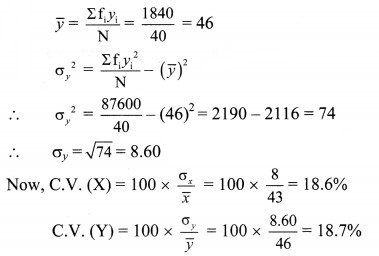
Since C.V. (Y) > C.V.(X),
C.V. (B) > C.V. (A)
∴ Series B is more variable.
Question 9.
Compute the coefficient of variation for team A and team B.
Which team is more consistent?
Solution:
Let denote no. of goals of team A and denote no. of goals of team B.
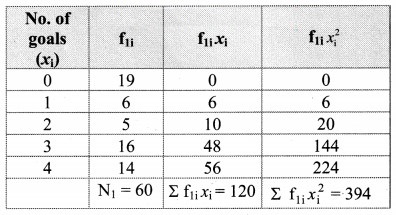

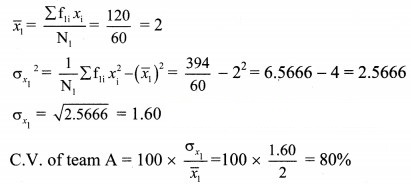

Since C.V. of team A > C.V. of team B,
Team B is more consistent.
Question 10.
Given below is the information about marks obtained in Mathematics and Statistics by 100 students in a class. Which subject shows the highest variability in marks?
Solution:
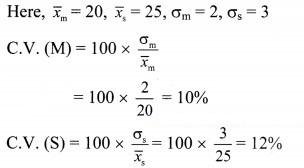
Since C.V. (S) > C.V. (M),
The subject statistics show higher variability in marks.